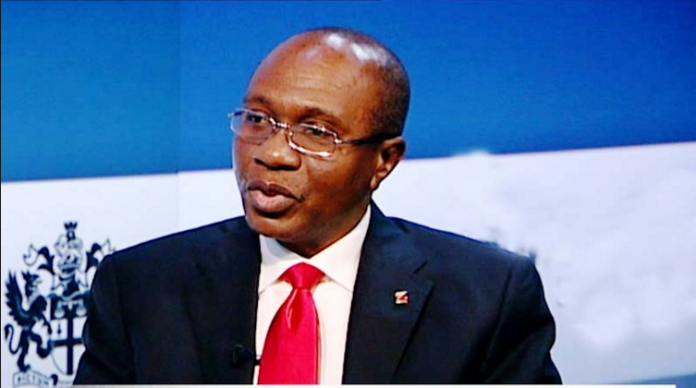By Dr. Boniface Chizea
Contrary to expectations by most analysts before the Monetary Policy Committee (MPC) meeting which held on Monday and Tuesday, March 25, 26, 2019 the Monetary Policy Rate (MPR) was reduced by 500 basis points to 13.5 per cent from 14 per cent.
It is on record that the rates had remained at 14 per cent since July 2016; a period of over two years. Judging from both the statement and body language of the Governor of the Central Bank before the meeting it was all but concluded that as it happened with the first MPC meeting of the year which held on January 21, 22, 2019 that a hold decision was going to be taken.
The Governor at a public presentation he made before the meeting did in fact say that inflationary expectations still remained high and since the trend in economic fundamentals are in the positive direction that there was the need for the country to bid its time. It was therefore not surprising that a split decision was the situation that resulted in the decision to reduce the MPR and there would probably be no price offered for a guess on how the Governor voted at the meeting which at once speaks to the independence of members of the Committee in reaching decisions.
What really is the MPR and why is it so important for the economy? The MPR is the benchmark rate for interest in the economy. What that means is that this is the rate which the Central Bank would charge the banks that go to it for accommodation and therefore this is the base rate for interest charges in the economy at any particular point in time.
Often awareness is not demonstrated with regard to the asymmetric corridor that accompanies the indication of this rate. As at today this corridor has been included as it has been the case for some time now as +2/-5 which in point of fact means that when the Central Bank lends to a financial institution the rate is MPR+2 which is 16 per cent and if on the contrary a bank decided to deposit its funds with the CBN it would attract interest payment of MPR-5 which is 9 per cent. This explains why average interbank borrowing rates as indicated in the recent monetary policy Committee communique was at the level of 16.45 per cent as should be expected marginally above the rate at which a bank will borrow from the Central Bank.
Interest rate is a veritable factor cost which means that this is a cost which any business that has availed itself of institutional credit must recover as part of the proceeds from the business and therefore the interest charges impact on the bottom line and in a situation whereby a competitor overseas enjoys lower cost of capital, automatically that competitor enjoys a competitive advantage.
And an even more important consideration is that for the real sector, such level of interest rate is difficult to support particularly having regard to the usual quantum of funds involved.
But it is erroneous to suppose that anybody could wave a magic wand and the interest rates would come tumbling down over night.
The interest rate must be positive in real terms, that is, it must be above the level of inflation which has just been reported at 11.31 per cent as at the end of February, 2019 as it continues its south bound trend which has been witnessed so far for many months. In the unlikely situation of the interest rate being below the rate of inflation, which is very common with savings account holders in Nigeria today what then happens is that such savers pay an inflation tax to the extent of this differential.
It is also in order to observe that there are other headwinds which pose as causative factors for inflation in Nigeria today; expansive fiscal operations which results in large deficits whose funding either crowds out private sector interests and could be out rightly inflationary depending on the preferred method of funding the deficits, energy costs, gaps in requisite infrastructure, insecurity particularly in some regions of the country affected by Boko Haram insurrections and late passage of the budget which might necessitate sudden and massive injection of liquidity into the economy thereby overheating it.
Therefore to win the war against inflation we must adopt a focused, consistent and persistent attack on all fours for us to have a chance of success and therefore it is unrealistic to expect good results by attempting only to regulate the amount of liquidity in the economy by keeping interests rates high.
But what agitates the mind of the average citizen is why the Central Bank has kept the Benchmark interest rate at a level of 14 per cent for so long. During the onset of the recession, the Bank felt that there was the need to maintain a tight monetary stance to regulate liquidity in the economy even as it must be admitted here that interest rate is not the only means available to the Central Bank for the regulation of the quantum of liquidity in the economy.
An important instrument in this regard is the Open Market Operations (OMO) whereby the Central Bank redeems and issues money market instruments as the need arises. In point of fact for as long as the fear of inflation spiraling out of control persists, the Central was not prepared to countenance a reduction on the level of interest rates.
The Central Bank also felt it was in order for it to concentrate on its core mandate of maintenance of price and exchange rate stability with a singular focus on the exchange rate of the Naira as well as the sustenance of accretion to the Reserves. It also remains a fact that the rate of returns enjoyed by external investors supported the level of foreign currency inflow into the economy particularly for a relatively high risk environment such as Nigeria.
So for as long as the country enjoyed stability of the economic fundamentals; there was no need to upset the apple cart. If it is not broken why mend it?
Recognizing the likely impediment occasioned by a high interest rate regime, the Central Bank over the years had adopted a direct interventionist policy as aligned with its development mandate by providing targeted funds at single digit interest rates to critical growth inducing and job creation sectors of the economy.
In this regard we recall the following funds; Commercial Agricultural Credit Scheme, Small and Medium Enterprises’ Restructuring and Refinancing Facility, Power and Airline Intervention Fund, Small and Medium Scale Enterprises Credit Guarantee Scheme, Nigerian Electricity Market Stabilization Facility, Anchor Borrowers’ Program, Youth Entrepreneurship Development Program, Export Stimulation Facility, Textile Sector Intervention Facility, Agricultural, Small and Medium Equity Investment Scheme amongst others. Therefore it might not be correct to levy an accusation that the Central Bank has been wholly complicit in the lackluster performance of the national economy.
But it is a welcome development for the MPR rate to be reduced after over two years. Often it is not realized that for other such bodies internationally, the only factor for consideration during such meetings is the interest rates. How would that sound for the same position to be maintained over a two year duration?
The other challenge to confront is the transmission delays. How long would this indicated easing stance reflect on the interest rates for credits which the banks extend since if there is no effect we might as well be onto an empty and premature celebration?
Overseas the following day after this announced reduction, what follows will be reduction on the interests on mortgage rates across board as its benefits accrue at the level of the individual debtor. We hope that the Central Bank will keep fidelity to its promise to track the banks to ensure that expected reductions are passed on to the customer.














